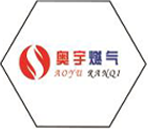
Oct . 03, 2024 06:11
Back to list
Relief Valve Mechanism and Its Importance in Pressure Regulation Systems
The Importance of a Pressure Relief Valve in Industrial Systems
In the realm of industrial engineering, safety and efficiency are paramount. One critical component that plays a vital role in maintaining these standards is the pressure relief valve, often referred to as صمام التنفيس in many Arabic-speaking regions. This essential device serves as a safeguard against the dangers of overpressure in various systems, ensuring safe operations across numerous industries, from oil and gas to chemical processing.
Pressure relief valves are engineering marvels designed to prevent catastrophic failures in pressure vessels and piping systems. When the pressure inside a system surpasses the predetermined limits, the valve automatically opens, allowing excess pressure to escape. This action prevents potential explosions, equipment damage, and other hazardous situations. The importance of having a reliable pressure relief valve cannot be overstated; it is often the last line of defense against serious accidents.
There are several types of pressure relief valves, each tailored for specific applications. The most common types include spring-loaded valves, pilot-operated valves, and rupture disks. Spring-loaded valves are straightforward, consisting of a spring mechanism that opens under excess pressure. Pilot-operated valves, on the other hand, use a smaller “pilot” system to control the larger valve, providing enhanced accuracy and efficiency. Rupture disks are designed to break at a predetermined pressure, providing a simple yet effective means of pressure relief.
صمام التنفيس

Proper maintenance and regular testing of pressure relief valves are crucial to ensuring their effectiveness. Over time, factors such as corrosion, sediment buildup, and mechanical wear can impair a valve's functionality. Therefore, routine inspections and maintenance are necessary to prevent failures. Industrial facilities must adhere to stringent regulations regarding the testing and certification of pressure relief valves to ensure they meet safety standards.
Moreover, the placement of these valves within a system is equally important. Engineers must carefully calculate the required relief capacity based on the specific application and potential pressure scenarios. An inadequately sized valve can lead to dangerous conditions, while an oversized valve may not operate efficiently. Thus, thorough knowledge and experience in this area are essential for engineers and safety personnel.
In addition to technical considerations, the importance of training personnel on the significance and operation of pressure relief valves cannot be ignored. Workers must understand the role these devices play in maintaining safety and be familiar with the procedures for addressing issues that may arise. This knowledge is a critical part of fostering a culture of safety within an organization.
In summary, the pressure relief valve, or صمام التنفيس, is an indispensable component in industrial systems, protecting both personnel and equipment from the perils of overpressure. Through proper selection, installation, maintenance, and training, industries can enhance their safety protocols and ensure the efficient operation of their systems. As technology continues to evolve, the ongoing advancement of pressure relief valve design and functionality will further bolster safety measures, underscoring the importance of this device in safeguarding industrial environments.
Latest news
-
Safety Valve Spring-Loaded Design Overpressure ProtectionNewsJul.25,2025
-
Precision Voltage Regulator AC5 Accuracy Grade PerformanceNewsJul.25,2025
-
Natural Gas Pressure Regulating Skid Industrial Pipeline ApplicationsNewsJul.25,2025
-
Natural Gas Filter Stainless Steel Mesh Element DesignNewsJul.25,2025
-
Gas Pressure Regulator Valve Direct-Acting Spring-Loaded DesignNewsJul.25,2025
-
Decompression Equipment Multi-Stage Heat Exchange System DesignNewsJul.25,2025

